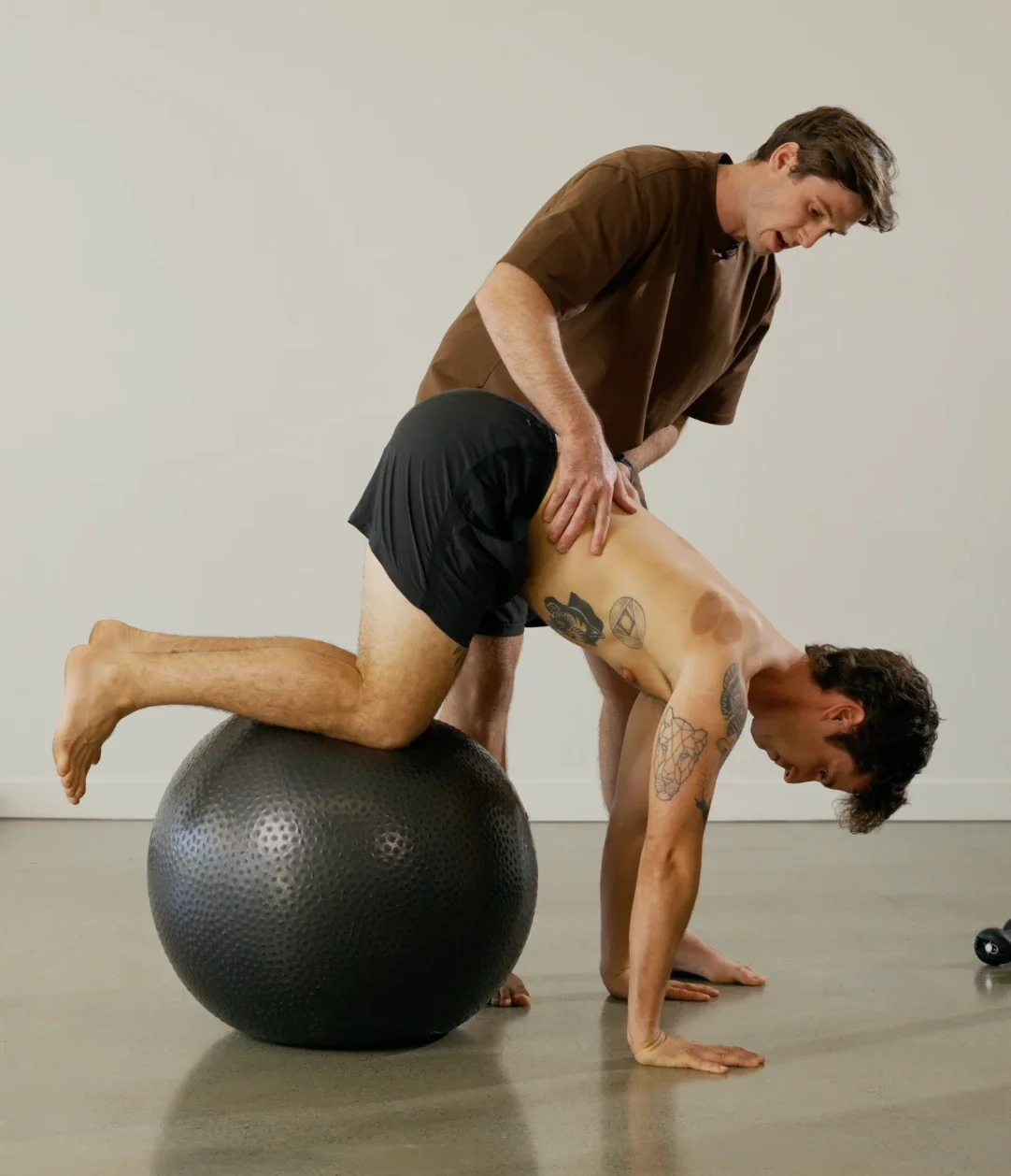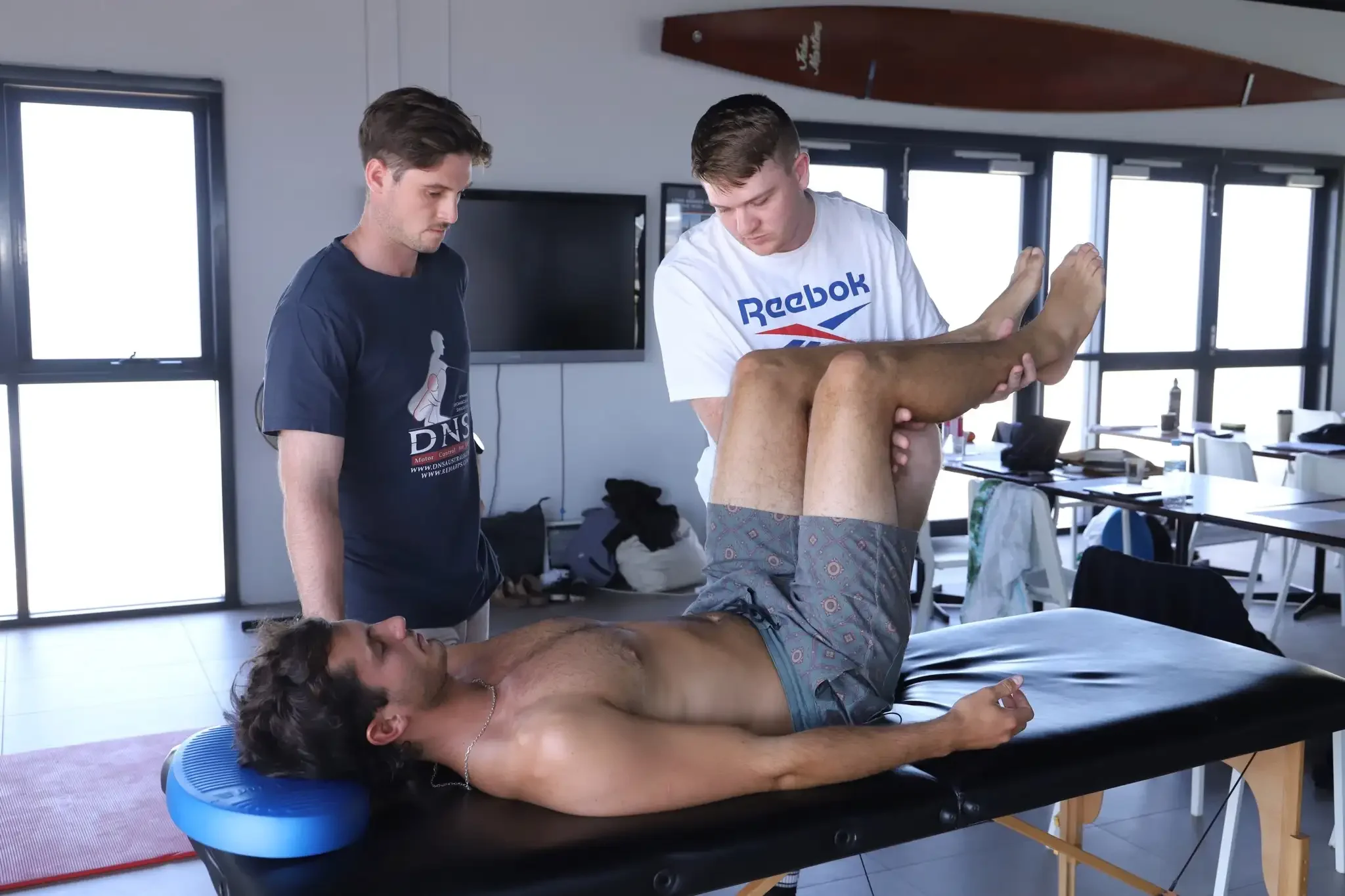DNS (Dynamic Neuromuscular Stabilisation): What It Is and How It Works
Ever feel like no matter how much you stretch or push through, your pain keeps looping back? That's the frustration – your body's trying to protect itself, but you're stuck in the same cycle. It's the Problem-Agitate-Solution dance most don't even realise they're doing.
If you've been wondering what DNS therapy is, it's a method that retrains how your brain and muscles work together, starting where things first went off track. The challenge? Most treatments focus on chasing pain, but DNS questions movement at its core and corrects it from the foundation up – so your body can finally move the way it was designed to.
If you're juggling work, fitness goals, or just tired of nagging tension, DNS could be the missing link. At Forma Health & Rehabilitation Broadmeadow, we use it daily to help people like you move and feel better again.
Defining DNS Therapy
DNS helps your body rediscover how it was designed to move by rebuilding the motor patterns that developed in infancy. Unlike traditional therapy, it trains the central nervous system to regain functional control over muscles and joints. This helps restore symmetry, stability, and natural strength without chasing symptoms.
Core Concepts and Principles
DNS is built on developmental movement patterns-the stuff we all did before we learned to walk. These patterns are wired into the brain and rely on sensorimotor loops guided by the central nervous system. The goal is to reactivate those loops, allowing the body to move with greater control and efficiency.
How DNS Therapy Works
DNS doesn’t guess-it follows how the human body was meant to stabilise and move. It resets the foundation before rebuilding function and reinforcing strong patterns.
The Stabilising System
Your spine relies on a team of deep muscles, including the diaphragm, to stay stable. This is called the Integrated Stabilising Spinal System. When it misfires, everyday movement becomes less efficient. DNS trains these muscles to work behind the scenes, using intra-abdominal pressure to protect joints and control motion.
Neuromuscular Re-education
Every movement relies on the brain knowing how to use the right muscles at the right time. DNS trains this coordination by helping stabilising muscles resume their primary role. With joint centration and controlled muscle activation, the body's motor control becomes refined and dependable.
Breathing and Movement Patterns
Many people forget how to breathe properly under load. DNS retrains diaphragmatic breathing linked to movement, just like a baby learns to roll, sit, and then stand. Training follows these stages, utilising a combination of passive positions and active control to refine your movement patterns.
Benefits and Results of DNS Therapy
We’ve found that when people reset their movement, they feel lighter, stronger, and finally able to move without hesitation.
General Improvements
DNS helps restore healthy posture and spinal alignment, making movement smoother and more purposeful. The training enhances core control without forcing stiffness. Most people notice more effortless movement, better balance, and fewer relapses into painful episodes.
Applications in Daily Life and Sport
Whether you’re picking up your kid or training for a triathlon, DNS helps your body use the proper mechanics. At Forma Health & Rehabilitation, we integrate DNS to help athletes return stronger and prevent re-injury. Everyday tasks feel easier when movement patterns don’t fight against you.
DNS for Specific Conditions
If you’ve lived with ongoing back, joint, or muscle pain, DNS offers a targeted solution. It helps recalibrate muscle control and coordination affected by chronic pain, joint dysfunction, or poor habits. Our patients often regain movement they thought was lost for good.
DNS Techniques and Exercises
With DNS, the magic lies in simplicity. Controlled positions, focused breath work, and thoughtful stability triggers help retrain your body effectively.
Foundational Exercises
Our beginner-level DNS programs begin with fundamentals, such as breathing in a 90-90 or quadrupod position. These simple postures are powerful when paired with mindful breath control and core engagement. No gear, no rush-just restoring the brain’s original roadmap.
Advanced DNS Movements
For those progressing through recovery or strength goals, DNS includes standing drills, resistance variations, and reaction control testing. Each pattern builds from previous stages, with a clear purpose to reinforce the body’s ideal stabilisation pathways.
Specialist-Guided Programs
At Forma Health & Rehabilitation Broadmeadow, our therapists offer one-on-one sessions in addition to weekly DNS classes. Whether you’re dealing with sports strain or postural dysfunction, every programme is tailored, guided by in-depth assessments and our unique Reset-Rebuild-Reinforce approach.
Learning and Accessing DNS Therapy
DNS learning is accessible whether you're just getting started or want to deepen your knowledge as a professional. We make it easy to begin.
Starting with DNS
Your first step might be a general discomfort or a desire to move better. At Forma Health & Rehabilitation, we help you identify your motor control gaps and then create a personalised plan that includes at-home options and clinic sessions. Our Adamstown class runs every Tuesday at 5:00 pm for extra support.
Education and Training
For professionals seeking certification, DNS training offers foundational, intermediate, and advanced courses. Our team stays current with global standards and provides guidance on learning opportunities in Australia for clinicians and students alike.
Cost and Accessibility
We believe a well-moving body shouldn’t break the bank. DNS Therapy is offered in affordable packages and flexible formats to suit different needs.
Treatment Cost
Prices vary based on the session type, whether you're in a one-on-one rehab appointment or a group class. We offer both public and private clinic options. No GP referrals needed. All bookings through our Broadmeadow location are direct and convenient.
Availability
You’ll find DNS services right here in Broadmeadow at Forma Health & Rehabilitation, offering personalised options for recovery or performance. Our team brings over 25 years of combined rehab experience across osteopathy, physio, and chiropractic care under one roof.
Frequently Asked Questions
What does DNS do for the body?
It retrains brain-muscle communication, helping restore core stability and efficient joint movement.
How long does DNS take to show results?
Many people feel shifts within 3–5 sessions, although lasting improvement typically develops over several weeks.
Can children safely do DNS?
Yes, with age-appropriate sequences and a trained therapist, children often benefit greatly from early intervention.
What are typical results or reviews?
Patients report reduced pain, improved posture, increased strength, and a decreased fear of reinjury. Athletes speed up recovery.
Where can I find DNS near me?
Forma Health & Rehabilitation offers DNS right in Broadmeadow, NSW. Call (02) 4961 6200 or email admin@formahealth.com.au to schedule a booking.


